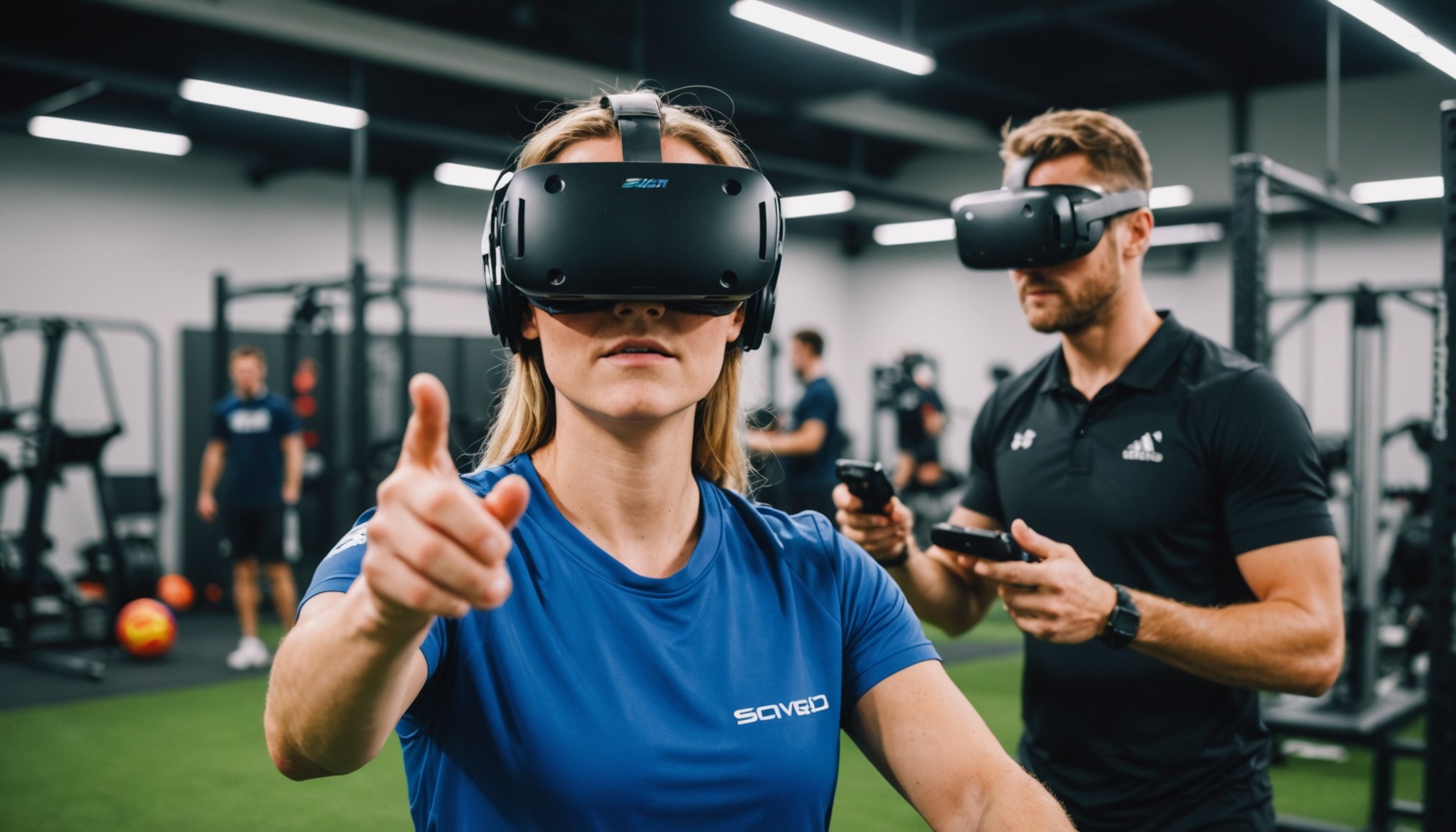Overview of Virtual Reality in Sports Training
Virtual Reality (VR) is pushing boundaries in the world of sports training, revolutionising how athletes enhance their performance. By creating immersive simulations, VR allows athletes to practice and refine their skills in a virtual environment, minimising physical wear while maximising engagement and learning.
Historically, technology in elite sports has consistently pushed performance limits. Innovations like video analysis and data-based feedback rapidly gained acceptance, setting the stage for VR to deliver unprecedented athlete performance improvements. As VR technology advances, it offers more realistic simulations and precise feedback, further embedding itself in sports training regimes.
This might interest you : Fostering tomorrow”s leaders: how uk youth sports initiatives cultivate leadership abilities in young athletes
Currently, the application of VR in sports training sees diverse trends. Athletes and coaches employ VR to mimic high-pressure scenarios, such as last-minute game-deciding situations, enhancing mental resilience. Realistic replications of opponents’ tactics enable more precise strategic planning and train athletes efficiently off the field.
In essence, embracing virtual reality brings a dynamic edge to sports training environments. Its ability to provide a safe yet competitive virtual space is becoming indispensable for teams aiming to stay ahead. As VR further integrates into training programs, it promises not only physical benefits but also mental and strategic advantages, offering a comprehensive tool for peak athlete performance.
This might interest you : Ultimate Stretching Strategies for UK Athletes: Boost Performance and Prevent Injuries
Case Studies of UK Elite Teams Utilizing VR
The adoption of Virtual Reality (VR) technology in sports training by UK sports teams has offered transformative insights into performance enhancement. The following case studies explore specific examples and assess VR’s impact.
Team A: Performance Improvement Metrics
For Team A, integrating VR into their training regimen has shown significant improvements. Key metrics, such as speed, accuracy, and decision-making, have seen noticeable growth since VR implementation. Coaches highlight VR’s role in refining team dynamics, as athletes can practice synchronised plays and strategies in a controlled virtual setting. Athletes themselves testify to the enriched training experience, citing increased confidence during high-pressure scenarios.
Team B: Innovations in Training Programs
Team B has embraced innovative VR training programs, revolutionising their preparation strategies. VR allows the simulation of complex match conditions, facilitating unique tactical insights. An additional benefit is virtual walkthroughs, enabling players to adjust their strategies without physical exertion. However, challenges such as initial hardware setup and technical training posed hurdles during implementation.
Team C: Cross-Disciplinary Collaborations
Team C’s success with VR stems from cross-disciplinary collaborations with tech developers and sports scientists. These partnerships fostered novel interdisciplinary projects that significantly enriched training outcomes. Insights from sports scientists solidified VR’s effectiveness, particularly in enhancing spatial awareness and cognitive processing. Such collaborations are paving the way for future innovations and sustained success in VR-enhanced training.
Future Trends in Virtual Reality for Sports Training
As Virtual Reality continues to evolve, new future trends are shaping the landscape of sports technology. These trends are not just confined to technological advancements but also include innovative training practices and paradigms.
One of the primary future trends is the integration of real-time data analysis and feedback in VR systems. This development will allow for immediate performance analysis, enabling athletes to make adjustments on-the-fly. The potential of these advancements includes enhanced precision in monitoring athlete performance, further optimizing training sessions.
Moreover, the future holds a vast range of technological innovations that could redefine the scope of VR in sports training. These innovations range from more sophisticated hardware to improved user interfaces, making the technology more accessible and user-friendly. Such progress is expected to lead to more widespread adoption of VR across various sports.
The evolving training paradigms are also noteworthy. With VR, there is a shift from traditional, physically demanding routines to more mentally immersive training modules, emphasizing cognitive skills as much as physical ones. These future trends could usher in a new era of athlete preparation, focusing on strategic and mental fortitude.
In essence, the future of virtual reality in sports promises exciting evolutions that will likely redefine what it means to train and perform at the elite level.
Benefits of Virtual Reality in Elite Sports Training
Integrating Virtual Reality (VR) into elite sports training environments offers numerous benefits that significantly enhance athlete engagement and overall training efficiency. One core advantage is the heightened athlete engagement VR facilitates. Through immersive experiences, athletes are more mentally present, allowing them to better internalise various training elements and techniques. This increased involvement often translates into more effective practice sessions and improved performance on the field.
Additionally, VR provides the unique opportunity to simulate high-pressure scenarios. These realistic simulations prepare athletes for intense game situations, promoting mental fortitude and strategic resilience. For example, simulating a last-minute penalty kick can help a footballer master the balance between pressure and performance, ensuring readiness when it truly counts.
Moreover, VR significantly reduces the physical strain faced during conventional training methods. By practising techniques virtually, athletes can avoid repetitive stress injuries and minimise recovery time without sacrificing skill development. This aspect is particularly beneficial in maintaining fitness without the risk of overtraining.
In essence, VR’s role in elite sports training is transformative. Its ability to deliver immersive, strain-free, and high-pressure training experiences is invaluable for athletes aiming to excel. As VR technology continues to evolve, its benefits in enhancing athlete engagement and training efficiency will undoubtedly expand, reshaping athletic preparation paradigms.
Challenges and Limitations of Implementing VR
Implementing Virtual Reality (VR) in sports training comes with distinct challenges and limitations that stakeholders must navigate. A primary concern is the technical challenges faced by teams. The initial setup often demands sophisticated hardware and software, which can pose hurdles, especially for teams lacking technical expertise. Compatibility issues with existing training facilities can also arise, requiring tailored solutions to ensure seamless integration.
Resistance from traditionalists in coaching further complicates VR implementation. Coaches accustomed to conventional training methods may question VR’s effectiveness and be hesitant to adopt unproven technology. This scepticism can slow the transition process, requiring thorough demonstrations of VR’s tangible benefits to convert non-believers.
Financial implications are another significant barrier. The sustained integration of VR technology demands substantial investment. Costs encompass not only the procurement of VR systems but also ongoing maintenance and training for personnel. These financial outlays can be substantial, particularly for teams without extensive budgets, hindering widespread adoption despite the demonstrated benefits of VR in enhancing athlete performance.
Addressing these implementation issues requires strategic planning and a willingness to adapt. With effective solutions, VR’s transformative potential for sports training can be fully realised, offering valuable enhancements to modern athletic preparation.











